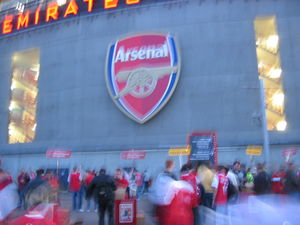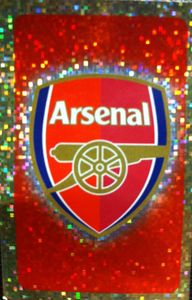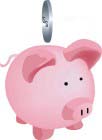升市中三大風險與對策
| 國際視野 | [昔日新聞] |
》 升市中三大風險與對策 (2010/10/11)
| 升市中三大風險與對策 | 2010年10月11日 |
【明報專訊】股市在9月份的強勁表現總是難以接續。MSCI國際指數上月上升了9%,好幾個新興市場現正創出新高。全球投資者重新願意承受風險,引致大量資金流入新興市場,巴西、菲律賓和韓國等地十分關注量化寬鬆,擔心資產價格上漲帶來的風險。澳元急速回升已經令澳洲儲備銀行推遲加息。在二戰以來最強的9月份以後 ,環球股市還有什麽上升動力?
歐洲經濟 南弱北強料持續
1. 更進取的手段要求人民幣的幣值重估?即使在美國愈來愈強的政治壓力下,北京方面沒有什麼迹象要改變循序漸進升值的方向。中方現階段更重要的,可能是抑制國內物業市場的投機炒作,同時又不會影響經濟增長。一般的言論仍然認為人民幣大幅升值只會吸引資金流入當地資產,從而令情况更加惡劣。所以應預期人民幣繼續緩慢升值至6.5元人民幣對1美元。
2. 歐洲傳來好消息?現階段歐洲的狀况非常清楚。正如本人早前所指出,北歐經濟迅速增長而南歐急劇下滑。
現時無理由相信分歧的增長情况會完結,反而應該問會否引致股市走勢會更走極端。
3. 美國的量化寬鬆?聯儲局願意量化寬鬆的態度,是風險資產9月上升(及美元下跌)的一個主要推動力。今日大部分的投資者都預期聯儲局有新一輪量化寬鬆,所以美元才跌得那麽急。
4. 日本的量化寬鬆?有趣的是,正當所有眼睛都望着聯儲局時,日本央行突然宣布強而有力的量化寬鬆政策,包括:(i)將日本的政策利率由0.1厘削減至0至0.1厘;(ii)承諾通過擴大資產負債表至少5萬億日圓,去買入日本政府及其他資產來增加流通量。債券
美逼人幣升值 難觸發貿易戰
今年夏天我們在堅持對美國經濟積極看法時,收到客戶激烈的反彈。但到現在,投資者確無可否認在回歸風險資產,當然這得靠三大經濟體中至少兩個的金融權力機構(即聯儲局和日本央行)大力協助。所以當股票市場估值仍然非常吸引、發展中國家的經濟繁榮增長以及經合組織範圍內的經濟穩定下來的時候,以及各國中央銀行明顯地要增加流動性的時候,投資者要面對的問題是:有什麽情况會出岔子(以及如何未雨綢繆)?
風險一:當風險資產大幅上升,商品價格屢創新高,新股禾雀亂飛時,聯儲局可能採取觀望態度,再而推出一個令人失望的小型量化寬鬆。這樣,美元會急劇反彈,同時債市會出現拋售。在匯市和固定收入市場的大幅波動下,股市難以獨善其身。幸好,有很多方法對冲這方面的風險,例如買入美元認購期權、買入亞洲股市的波幅,沽售日本政府短債或者建立日本銀行或出口企業的長倉。
風險二:當對中國匯率政策的不滿與日俱增時,全球可能會爆發貿易戰。話雖如此,我相信這威脅被煽情的傳媒誇大了,美國國會最近的行動最多不過是擺姿態。無論如何,對冲這方面的風險的方法是建立美元短倉,因為美元是國際貿易使用的貨幣。如國際貿易好像2008年般萎縮,美元的需求會跟隨下跌,雖然我們認為這風險的機會不大。比較可能的是人民幣繼續升值,令到全球通縮的壓力減輕。
美元恐超賣 宜加大已發展市場投資
風險三:快將到來的美國第3季業績期會令人失望,特別是比起之前的幾個季度而言。因為美國公司應該受到弱美元及低勞工成本的保護,我們認為這風險出現機會不大。
事實上,美國僱員的工時自1980年代初以來,都未試過像現在那麽長,公司似乎盡可能壓榨它們的僱員。將低資金成本、強勁需求、低存貨加起來。可以拖低企業利潤的因素只有亞洲的勞工成本上升和商品價格上升。如此一來,令人失望的盈利只會是個別的情况而非整體方向。
這樣的話,股票之間差別會比起過去幾年大。這對於大部分依靠選股技巧的基金來說是好事,因為他們不需要只靠買入賣出的時機去決定回報。總括來說,現在最大的風險是第一個,即是被超賣、低估的美元急劇反彈。所以,我相信現在應該降低新興市場和商品的比重,轉移重新留意已發展的市場如美、日、韓、德或者瑞典。
Pierre Gave
GaveKal亞洲區研究部主管
英文原文
September’s strong equity performance was always going to be a hard act to follow. The MSCI World rose +9%, and a number of emerging markets are now skirting new highs. Emerging markets, including Brazil, the Philippines and Korea, have raised concerns about asset-price inflation as the ‘risk on’ green light has led to strong EM inflows, while the sharp rally in the AUD has led the RBA to postpone a well-telegraphed rate hike. So after the strongest September since WWII, what are the possible catalysts for further upwards momentum?
1. An aggressive move to revalue the RMB? Such a development would be a shot in the arm for risk assets everywhere. However, Beijing is showing few signs of veering from its gradualist path, even amidst rising political pressure from the US. For China, at this stage, the greater concern may be restraining speculative pressures in the local property market without destabilizing domestic growth. And the general rhetoric continues to be that a sharp RMB revaluation would only encourage capital inflows into local assets, hereby making a bad situation worse. As such, it makes more sense to expect a continued gradual appreciation in the RMB towards RMB6.5/US$.
2. Good news out of Europe? At this stage, the picture out of Europe seems pretty clear. As we tried to show in our last Quarterly, Northern Europe is booming while the South is hitting the skids. And, as of now, there are no reasons to expect this divergence in growth to come to an end. The bigger question is whether this will trigger greater dispersion within the equity markets?
3. QE from the US? The Fed’s new found dovishness was one of the main drivers of the September rally in risk assets (and the reason behind the US$ weakness). Today, most investors are expecting a new package of Fed easing, which is why the US$ has been tanking so hard.
4. QE from Japan? Interestingly, while all eyes have been on the Fed, the BoJ announced today a reasonably punchy easing package with: i) cuts in Japan’s policy rate from 0.10% to a range of zero to 0.10; ii) promises to buy JGBs and other assets through an expansion in balance sheet of at least JPY5trn fund to “boost liquidity”.
When we argued a constructive view for theUS economy over the summer we received a violent pushback from clients. Yet a return to risk assets is undeniably unfolding; albeit not without extraordinary help from monetary authorities in at least two of the three largest economies (Fed and BoJ). So with equity market valuations still very attractive, economic growth booming in the developing part of the world and stabilizing in the OECD, and central banks visibly committed to providing excess liquidity, the question confronting investors should now be: what could possibly go wrong (and how to hedge against it)?
Risk #1: With risk assets rallying hard, commodities making new highs and IPOs flying off the shelf, the Fed may adopt a ‘wait and see’ attitude and deliver a disappointingly light QE2. This could trigger a sharp US$ rally and a sell-off in bond markets. And with increased volatility in both the currency and fixed income markets, it is hard to believe that equity markets would not be affected. Fortunately, there are many ways to hedge this risk, from buying US$ calls, to buying volatility on Asian equity markets, to selling JGB’s short or going long Japanese banks and exporters.
Risk #2: With frustration against China’s exchange rate policy mounting by the day, a trade war could conceivably ensue. Having said that, I continue to believe that this threat is typically overplayed by a sensationalist media, and that the recent actions by the US Congress were mostly just posturing. Still, the way to hedge this risk is probably to stay short the US$ as the US$ is the currency of global trade. Should global trade collapse, as it did in 2008, the demand for US$ would collapse along with it (note once again that this is not a risk we view as likely). A more likely development is that RMB appreciation continues to pick up, thereby abating global deflationary pressures.
Risk #3: The upcoming 3Q US earnings season could disappoint, especially in light of the bellwether quarters we have recently experienced. This seems unlikely to us as US companies should have been sheltered by a relatively weak US$ and weak labor costs. In fact, as we highlighted in our latest Quarterly, the number of hours worked per employee in the US has not been this high since the early 1980s… It thus seems that companies are currently squeezing as much as possible out of their employees. Combine that with low financing costs, decently strong final demand (see A Misunderstood Quarter), and relatively low inventories, and it seems that the only factor which could really drag down profitability would be either the increases in wage costs in Asia (most notably in China), or rising commodity prices. As such, earnings disappointments are more likely to be on a case-by-case basis as opposed to a broad trend. And if this is the case, then we may finally start to see greater dispersion within equity markets than what we have witnessed over the past few years. This would be a welcome development for most equity long-short funds which have had to endure a market where returns depended solely on timing the risk-on/risk-off trades rather than stock-picking skills.
Putting it all together, it is my feeling that the greatest risk to the current optimism on equity markets is the first mentioned above—namely a potential sharp rally in the oversold, undervalued US$. As a result, I believe that it makes sense to lighten up on emerging market/commodities exposure and instead refocus towards developed markets, whether in the US, Japan, Korea, Germany or Sweden.





